World Record Holder Christian Hottas’ Billwerder Bucht Marathon

There’s a person on this planet who has completed more marathons in his lifetime than everyone else. His name is Christian Hottas and he is from Hamburg.
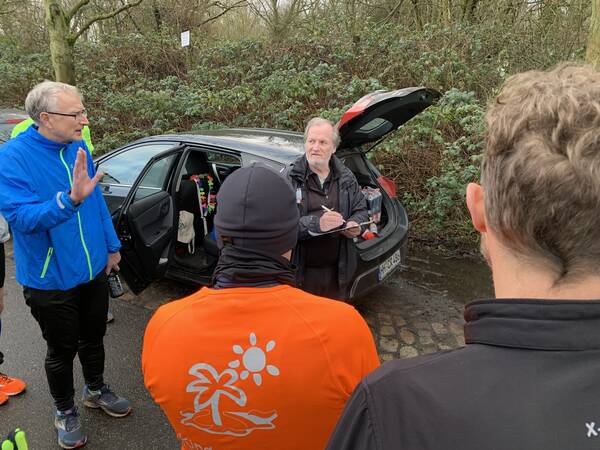
What’s your guess, how many marathons do you have to run to be number one in the world? 500, maybe a thousand? In the World Megamarathon Ranking of June 2019, Christian Hottas was listed as number one with an insane 2,785 completed marathons. Imagine that. How many marathons per year for how many years? And by the way, when does a marathon count as a marathon?
I would find answers to these questions today from number 125 in the world, according to the list.
As with Sülldorfer Feldmark-Marathon a few weeks earlier, I arrived at joining this marathon race because it’s in the vicinity and takes place during the cold unpopular running months. The guy who created that Sülldorf event, Hajo Meyer, also happened to be number 9 in the ranking, with 1,619 marathon runs. This is a scene I was entering by accident.
How do you get to so many marathons?
First, you have to define what counts as a marathon. German marathon running clubs define it as a race which has a length of at least 42.195 kilometers, obviously, but it has to be publicly announced in any way, and needs to have at least 3 starters. So, if you set out to collect marathons, you could set up a public Facebook group for example, share it with your friends, and run a marathon every day. As long as two of your buddies start the race together with you, and you finish the whole 42.195 kilometer course, you’re on top of the list after 2,800 days of marathons (in case Hottas and the other collectors stopped running today). That’s just 7.67 years of daily marathons. No biggie.
As I understand it, Christian Hottas collected a lot of his marathons by setting up very small public marathons and did them with a few fellow runners who didn’t necessarily complete them like him. Because there simple aren’t enough “bigger” races to collect so you could arrive at numbers like these. Hottas also did quite a number of ultramarathons (check out his statistics at the DUV, and by the way, here are mine) and destination races, and in his prime he even broke the magic 3 hour barrier which I’m still trying to get. The guy means business.
With world records it’s hard to get everyone’s standard on earth on par, I learned. These mentioned rules only apply for German runners, and even here the clubs are the ones who define these rules. A consensus has to be found first. Other countries’ running clubs have different rules, many of them harsher. For example, in Denmark, finished ultramarathons don’t count even though they are longer than marathons. In Finland, your race has to have at least 20 finishers, not just 3 starters, if I remember correctly. How do you create an international list with comparable results, then?
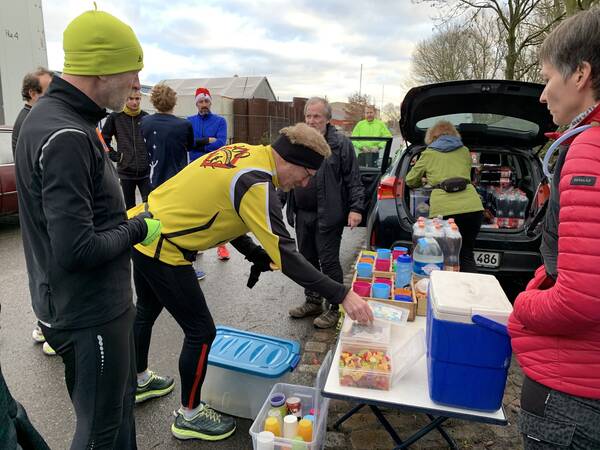
About 25 starters are here on a neat four-lap course around the Billwerder Bucht. Hence the name of the race, “Bucht” means bay.
Today, on December 21st of 2019, Hottas himself arrived around five minutes before the 10 AM scheduled start. He quickly went through the list of registered participants and ticked them off, his partner and him set up the aid station table with about five hand movements – absolute routine – before he explained the easy course layout and set off the race.
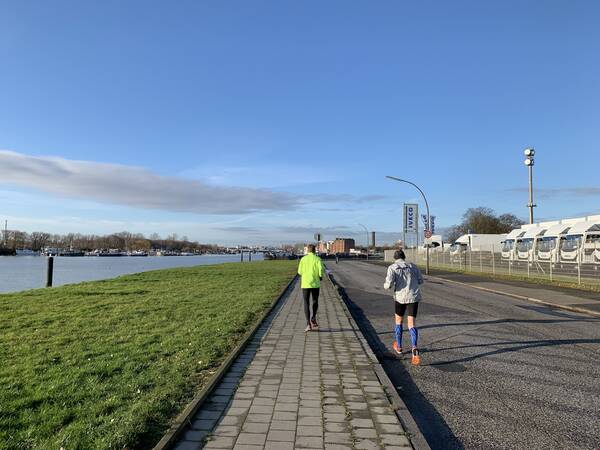
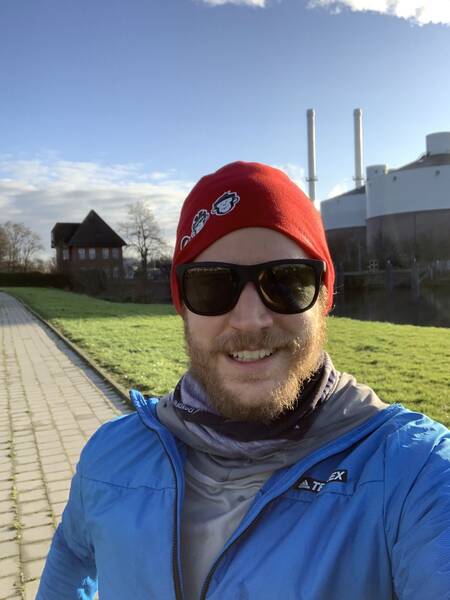
So far, the dark season hasn’t been too bad up here in Hamburg. All the late fall marathons I’ve done had sun. There were just a few weeks with regular rain. No snow yet, very rarely even sub zero temperatures. Can’t complain. My own fitness has declined since the last marathons of mid November, though. I enjoyed a bunch of drinks and candy I must admit. No run above 20 kilometers. And quickly, a substantial part of my fitness went out of the window. Anyways, it will surely be enough for a marathon.

Part of the course was on Hamburg’s circular bike path, 2. Grüner Ring, which is about 100 kilometers in total length and which I used back in June to go for a continuous 100 kilometer run.
It’s a nice and quiet area of the city with just a hint of industry. On a day like this, with the weather turning out to be sunny, it’s actually quite enjoyable to run around this little bay.
I went with a 5:20 minutes per kilometer pace, because it seemed reasonable to me given the last weeks’ poor nutrition in my belly. A couple runners headed off into the distance and I found myself in a little group of four at roughly the same pace. Soon, the group would dissolve slightly, until just Mario Sagassar and I remained in this pace group. He is the number 125 in the world ranking with more than 700 completed marathon runs. We started talking and he kindly answered a lot of my newbie questions.

Having a coke at our unsupervised aid station after every loop helped me, but it turned out it wasn’t quite enough. I felt my power leaving me after around 38 kilometers. The last few became a real struggle, which surprised me. Bad sleep, not enough water, maybe. Or really just the lack of longer training runs during the last few weeks. This is just the motivation I needed to step up the training again.
After a few short walking breaks – shame on me – I reached the finish in third place and got to do something new: enter my own finishing time into the official time table.
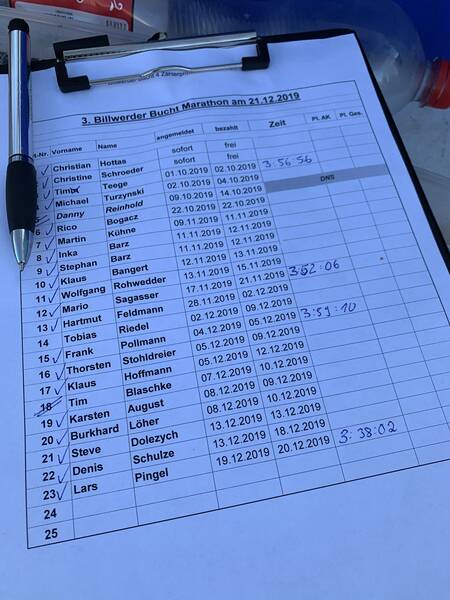
Then, you take your own medal out of a box and you’re ready to go, too. With another marathon in the books. That’s how you collect insane numbers of completed races just like Christian Hottas.
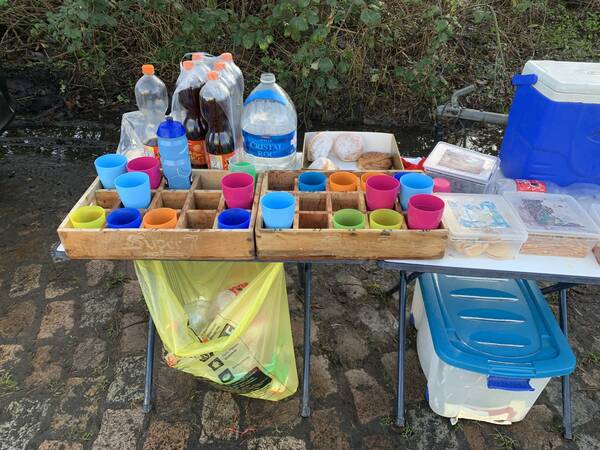

This was a nice and easy going event and it got me thinking about hosting a race again in 2020 after our quirky Hamburg Everest experience back in August. Got some ideas in my head, just need to convince a few more crazy people like me to help. Do you want to know more? Would you like to be part of something like that in the upcoming summer? Let me know and get in contact below!
How do you feel after reading this?
This helps me assess the quality of my writing and improve it.
2 Comments
Write a CommentRoss H. wrote:
6th of November 5:16
Leave a Reply to Ross H.
→Teesche replied:
6th of November 13:19
Leave a Comment